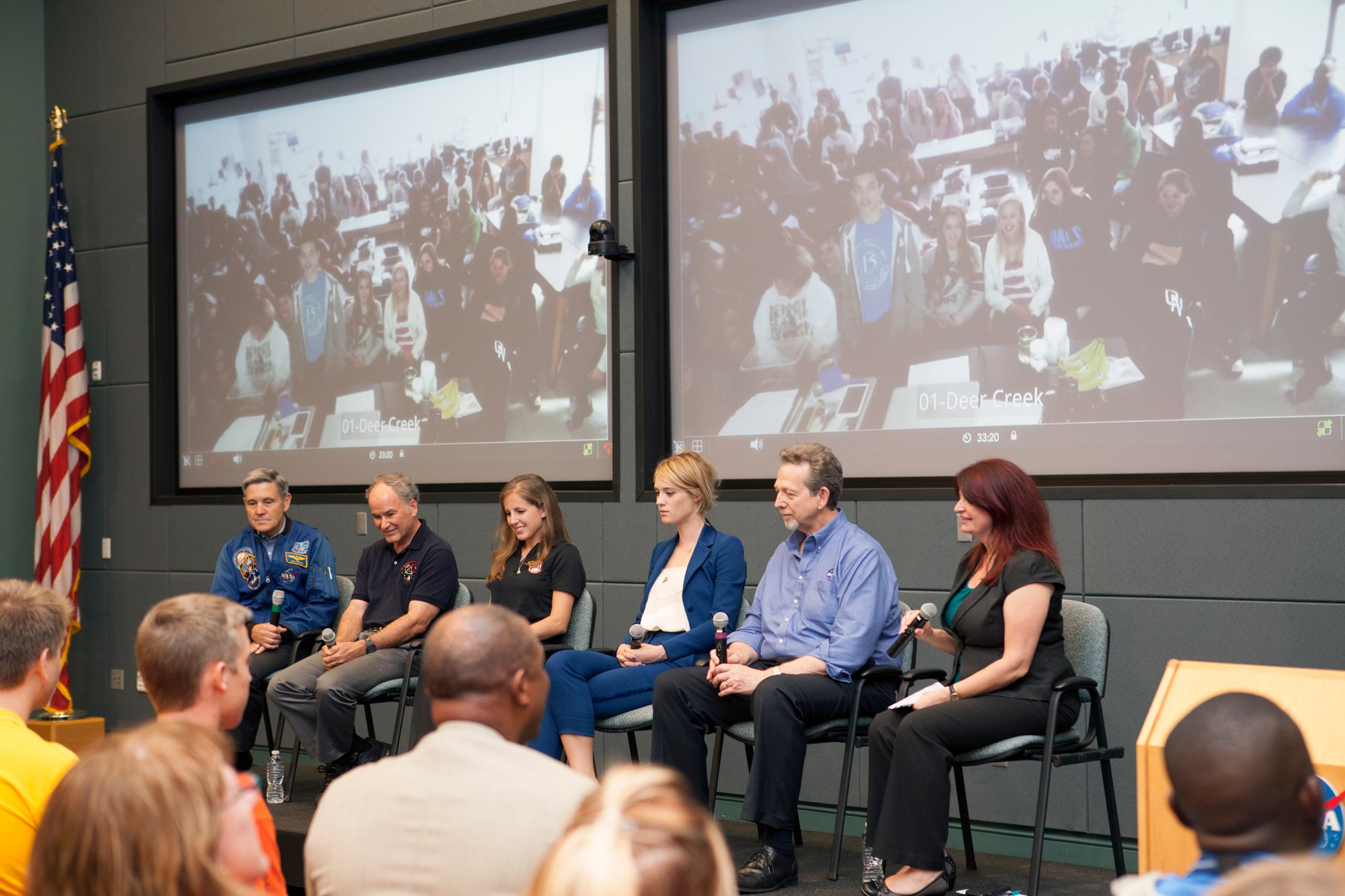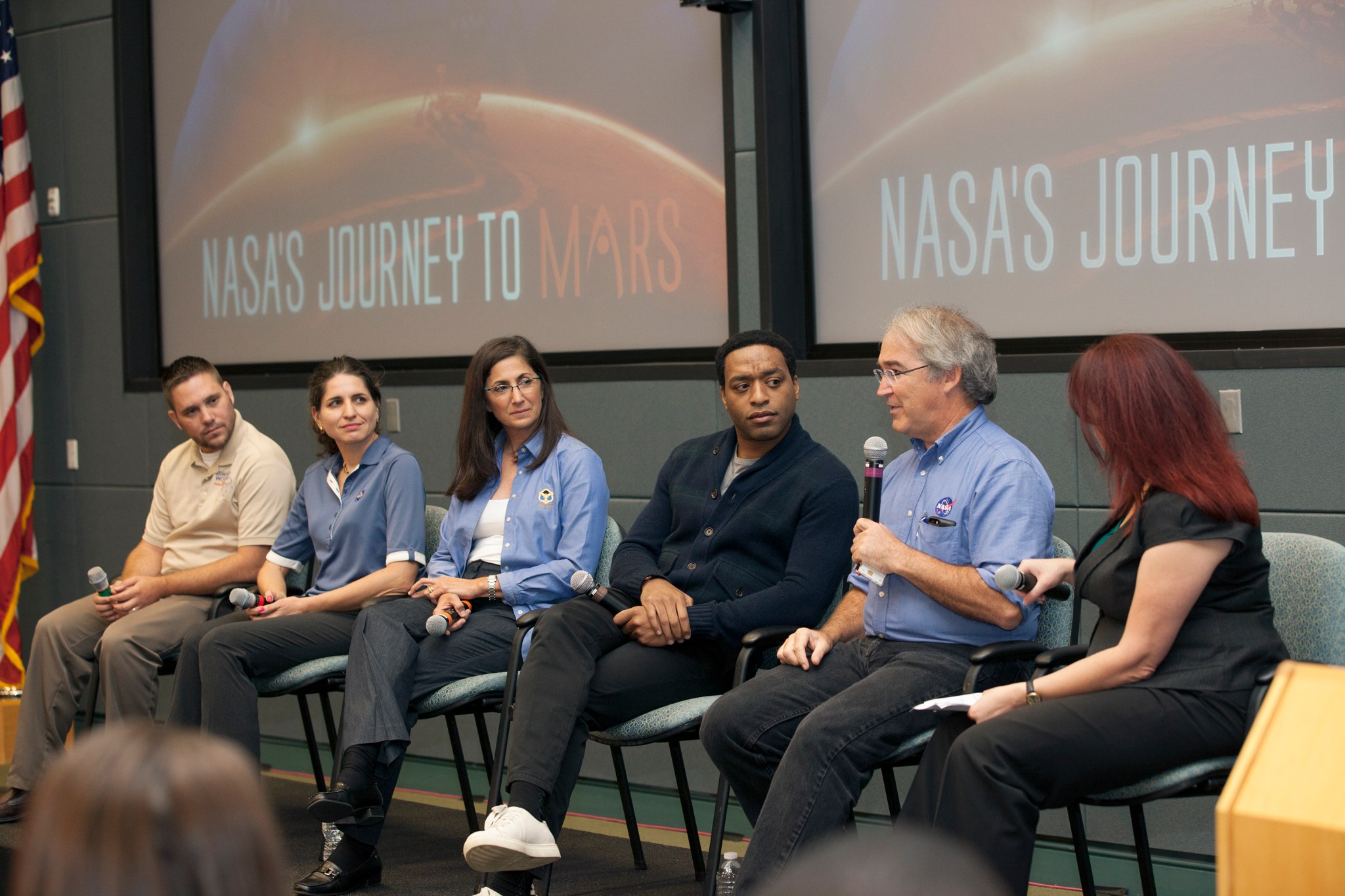Mars used to look a lot like Earth with two-thirds of the Red Planet’s northern hemisphere covered in blue and there is every reason to explore our nearest planetary neighbor in person, students from around the nation were told Thursday, Oct. 1, during a digital learning network event at NASA’s Kennedy Space Center in Florida that featured astronauts, scientists and actors from the film “The Martian.”

“We in America have the explorer gene,” NASA’s Jim Green, director of the Planetary Science Division, told the students in the room and those participating from classrooms from Texas and Wisconsin to North Carolina, Massachusetts and Pennsylvania. “We want to see what’s over the next hill.”
Green said the need to find out about Mars and perfect technologies to let humans survive and adapt to the planet are more than scientific curiosity: it’s a way to preserve humanity from the periodic disasters on this world such as asteroid impacts.
“Just like you have a backup for your phone and computer, we want a place to back up the human race. The dinosaurs didn’t have a space program,” he said to laughter and applause.
Two of the actors from the movie, Chiwetel Ejiofor and Mackenzie Davis, said the event gave them a chance to learn about the real work under way to allow human missions to a world 140 million miles away – that’s six or seven months in a spaceship and some two years away from Earth round-trip.
“I have no skill set to survive other than relating to other people and emoting,” Davis said, “but I did learn a lot about chemistry and math from people who could survive there.”
Ejiofor said deep study informed his portrayal of a NASA scientist in the movie.
“I had Wikipedia open all the time, trying to cross-reference everything and learn all I could,” Ejiofor said.
As to who would make the real-life trip, former space shuttle commander Bob Cabana, director of Kennedy, advised the students to learn how to adapt quickly and improvise solutions smoothly to problems no one expects. Plus, be ready to pursue goals even in the face of rejection.
“Find your passion,” Cabana said. “It takes hard work to become an astronaut and doing what you’re passionate about is what’s going to make the work fun.”
Retired astronaut Nicole Stott suggested those who want to be an astronaut to embrace teamwork quickly since astronauts are implementers of other people’s research and projects, not necessarily work that they devised themselves.
A couple of panelists even offered suggestions for where on Mars they would prefer to touch down.

“I actually would go back to the Mars pathfinder landing site,” said Dave Lavery, NASA’s program executive for Planetary Exploration who was a technical consultant for “The Martian.” “I’d like to go back and find out what happened to our rover.”
Advances of many sorts will be needed before NASA can undertake its journey to Mars in the 2030s, but some of the devices needed to produce a basic living environment for astronauts are already far along in development.
For example, Anne Caraccio, a chemical engineer at Kennedy who previously took part in a previous Mars mission simulation called Hi-SEAS, outlined a system deep into development that pulls oxygen and methane out of Mars’ thin atmosphere for use as breathing air and rocket fuel.
Ray Wheeler, a plant physiologist, said the potato crop suggested in the film is a real possibility for future crews to grow on another world for a number of reasons, including the nutrients contained in the crops.
“Until you run out of ketchup,” Green added.
Gioia Massa, a researcher whose work on NASA’s Veggie experiment has led to the first lettuce grown and consumed in orbit, highlighted the appeal of home that planets bring crews during long missions.
“It’s something to care for, something to think about and watch grow,” Massa said.
There are plenty of things on Mars for astronauts to worry about, including dust that kicks up quickly in storms and settles on any surface potentially causing a solar array to get covered up and stop producing electricity. The dust could also be brought inside a spacecraft unknowingly on an astronaut’s suit. That’s why teams of engineers including Michael Johansen are developing devices and techniques that quickly shake or electrically deflect dust away from critical systems.
All the work that goes into making a human journey to Mars is to ultimately gain knowledge about one of the few bodies in the solar system that would be somewhat hospitable to people, Lavery said.
“When we go to Mars, we’re going to discover stuff, things that the robotic systems haven’t found yet, things that are going to make us sit back and say, ‘How did we not see this coming?’, but those are the things that I think will be the most valuable and most interesting.”


























